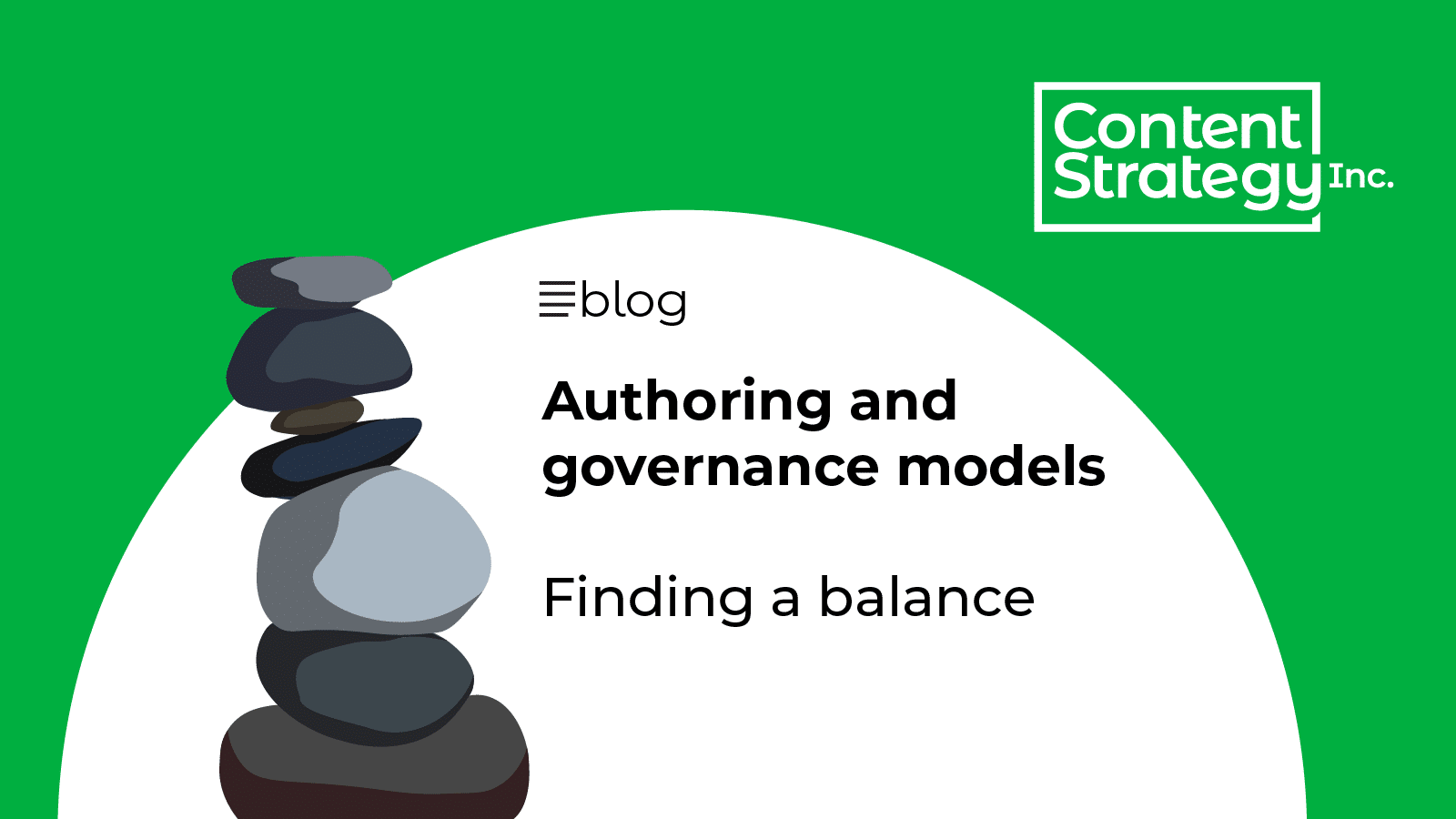Who's responsible for your content?
It’s really important to understand what the options are for content authoring and governance, so you know what method you’re using and you can decide if it’s really what’s best for your company. Why? Because the content authoring and governance models you choose have tremendous impact on content development processes and the resulting quality of your content.
Let’s start with some definitions:
Authoring model: Determines who creates content and who these people report to.
Governance model: Determines which departments make content decisions. What content is needed? Who’s the audience? What’s the best format and channel? What’s the purpose? What’s the voice and style? What constitutes success? Governance determines who owns the decision-making power.
Each of these models can be centralized, decentralized or a hybrid of the two. You can use a decentralized authoring model and a centralized governance model (not so much the other way around) or hybrids of one or both. There are benefits to using either style:
Centralized model
One department is responsible for creating content or making content decisions.
Benefits
The centralized model helps to:
- Reduce costs and maximize efficiency
- Improve quality and consistency
- Simplify project management
- Improve brand perception
- Align source content from different business groups
- Support strategic, structured, and requirements-based writing
Decentralized
Multiple departments are responsible for creating and publishing content, or for making content decisions.
Benefits
The decentralized model helps to:
- Reduce time to publication by eliminating content bottle-necks
- Ensure multiple voices and insights are reflected in published content
- Ensure that specialized content remains in the control of specialized departments
- Spread content creation costs throughout different departments
Which one is best?
A completely decentralized model is a risky move unless your organization has professional writers and content creators across all departments who are committed to collaborating and maintaining consistent standards.
Similarly, a purely centralized model tends to slow things down unless you’re a very small or lean organization.=
Usually, the most effective model blends centralized and decentralized approaches in a way that meets the specific needs of each organization. It’s all about balance.
You’ll want to lean closer to a centralized model the more committed your company is to:
- Consistency in customer experience
- Owning space across platforms
- Content marketing approach
Of course, it’s not always as simple as which would work best for our company? There are variables that impact where you end up on the sliding scale between centralized and decentralized:
- Departmental financing model
- Commitment from executive level
- Work and change culture (slow-moving ships vs agile speedboats)
- Whether employees are unionized
- Company politics
So, if you’d like the benefits of a centralized model but aren’t able to rein in some departments, what can you do?
Working as a decentralized or blended model
Create a cross-discipline, cross-department, content strategy working group
This team is responsible for content decision-making. The point is to include members from all departments that create content or impact content. Think about departments such as:
- Business groups
- Product groups
- Marketing
- Customer experience
- Web or digital strategy
- Technical and customer support
- Technical communications
See our previous post on implementing a content strategy working group to learn about goals and regular working group meetings.
Provide centralized editorial support and training services
Whenever there is a decentralized authoring or governance model, it’s important to make sure that all content aligns to consistent quality standards.
For a company of any significant size, have at least one content professional who understands how to edit, communicate, share, and train staff on adhering to content standards.
This person or team is responsible for identifying content support and training needs for both centralized and decentralized authors, designing the solutions and materials, and assigning the resources to deliver these services.
Editorial support should be provided as a requirement to all new authors on decentralized teams until they meet content quality requirements. After that point, editorial services should be available to decentralized teams on request.
Content training services should be provided on a regular basis to both centralized and decentralized content team members.
Tips for training content team members
- Provide quick-training sessions or information monthly on very specific topics or best practices
- Provide in-depth training sessions quarterly or as needed to address new changes, processes, or content concepts that are being implemented
- Combine authors from different teams when the training topic applies to all areas and experience levels and encourage discussion
- Enable team members to become experts in their specific content specialty
- Empower content team members to train their peers in their content specialty
- Make the training sessions applicable and enjoyable
Remember that organizational changes can change your centre of gravity, so the way you find balance now may not always work. Stay flexible and keep communicating!
Further reading
Understanding the content maturity model
